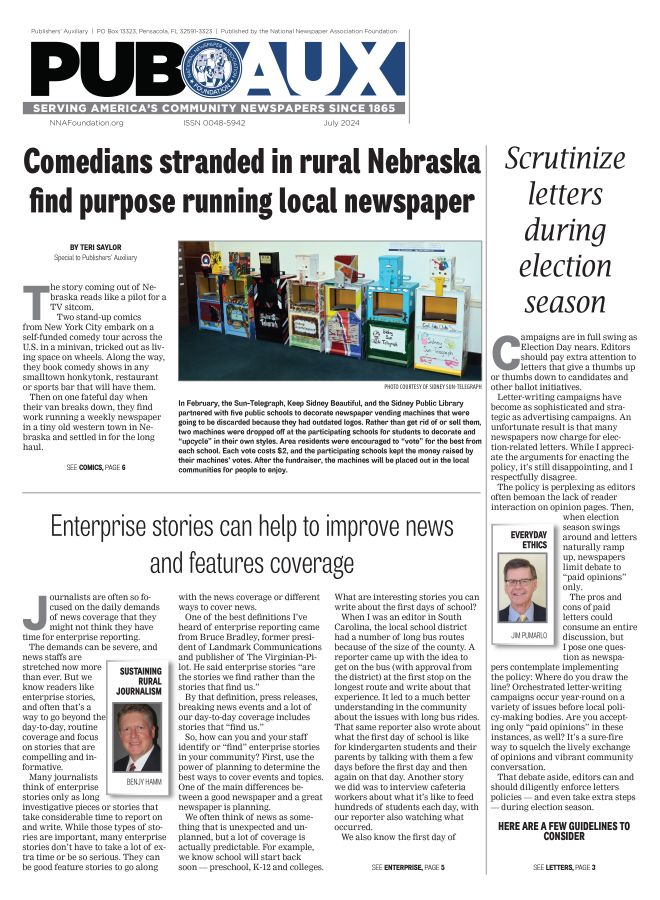Mitt, Mormons, and the religious test that wasn’t
Nov 15, 2012
FOR IMMEDIATE RELEASE – PUBLISHABLE ANYTIME – 11/15-22, 2012
Inside the First Amendment
Mitt, Mormons, and the religious test that wasn’t
By Charles C. Haynes
First Amendment Center
WASHINGTON – Buried in the mountain of demographic data preoccupying political pundits this week is one historic statistic that may have far-reaching consequences for religious freedom in America:
Seventy-nine percent of white Protestant evangelicals voted for Mitt Romney, a lifelong member of the Church of Jesus Christ of Latter-day Saints – popularly known as the Mormon Church.
After a bitter Republican primary season during which many evangelical leaders supported the “anybody but Romney” effort, prominent conservative Christian ministers lined up behind Romney for the general election. A defining moment came on Oct. 11 when America’s Preacher, the Rev. Billy Graham, publicly signaled support for Romney’s candidacy.
One week after Graham’s embrace of Romney, the Billy Graham Evangelistic Association removed from its website the reference to the Mormon Church as a “cult” – a small change in language that could have a big impact on future relations between evangelicals and Mormons.
It’s very likely, of course, that conservative Protestant acceptance of Romney was largely a political marriage of convenience. Evangelical positions on social issues such as abortion and gay marriage trumped misgivings about putting a Mormon in the White House.
But however pragmatic the reasons, strong evangelical support for Romney was an unprecedented break from the long history of anti-Mormon sentiment among Protestants that dates to the founding of the Mormon faith in the 19th century.
Theological differences will no doubt continue to spark robust debates between evangelicals and Mormons. But Mitt Romney’s run for the presidency appears to have shifted the tone of the disagreements, promising perhaps to usher in a new era of more-civil dialogue and – when public policy interests overlap – more common cause.
Like John Kennedy’s historic breakthrough as the first Roman Catholic to win the presidency, Romney’s candidacy signals another turning point in the long struggle to move beyond voter-applied religious tests for office. Although Romney fell short of winning a majority, his big numbers among evangelicals demonstrates that being identified as a Mormon is no impediment in a presidential race.
Beyond the Mormon question, is it possible that religious affiliation more broadly – for much of our history a litmus test for major party nominees – is becoming a non-issue in American presidential politics?
Consider, for example, that in 2012 no white Protestant was on either party’s ticket for the first time in our history. The response of voters to this milestone appears to have been a big shrug.
But despite the apparent indifference to the religious affiliation of this year’s candidates, voter surveys suggest that religion still matters in the voting booth. The range of “acceptable” affiliations may have expanded in recent elections, but the country is nowhere close to the day when either major party will nominate an avowed atheist for the presidency or vice presidency. Polls also suggest that candidates from many minority faiths, especially Muslims, would not fare well on the national stage.
Nevertheless, the demographic handwriting is on the electoral wall in an increasingly pluralistic America. Protestants are no longer in the majority for the first time in our history. And leadership of key institutions – long dominated by Protestants – is now religiously diverse. (The current U.S. Supreme Court, for example, has six Roman Catholic and three Jewish justices.)
The fact that Romney’s religious affiliation played virtually no role in this election is another step – a significant step – toward the day when candidates for high office are judged primarily by their record and character, not by the place of worship they attend (or don’t attend).
We still have a distance to go. But with Mitt Romney’s candidacy in 2012, we moved closer to the First Amendment promise of full religious freedom – a level playing field in the public square for citizens of all faiths and none.
Charles C. Haynes is director of the Religious Freedom Education Project at the Newseum, 555 Pennsylvania Ave., N.W., Washington, D.C., 20001. Web: firstamendmentcenter.org. E-mail: chaynes@freedomforum.org.







